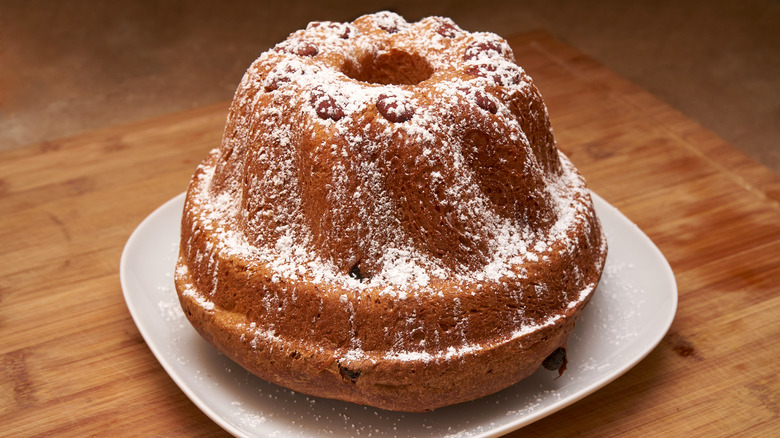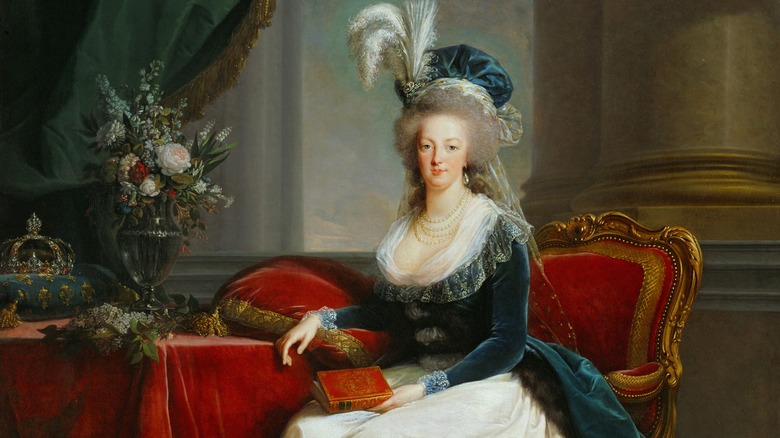Kugelhopf Is The Mysterious Cake Popularized By Marie Antoinette
Marie Antoinette, before she was famous for her largesse and extravagant spending habits — like her four-foot tall hair or the mini-farm she had constructed on the grounds of Versaille so she and her ladies could pretend to be milkmaids — was an Austrian princess, born to the Holy Roman Emperor Francis I and empress Maria Theresa. She was married off to secure an alliance between Austria and France and ended up leaving her native Austria as a teenager to settle into life as the wife of the future king, according to History.
According to legend, she introduced a few things to French culture due to homesickness, like croissants, per The Guardian. Croissants originated in Marie Antoinette's native Austria as kipfel, a yeasted, bready pastry in the same crescent shape as a croissant, before being reinterpreted by the court bakers at her request and made using laminated puff pastry, according to Smithsonian Magazine. The pastries Marie Antoinette brought to France became known as viennoiserie, per history blogger Curious Rambler. The queen may have also brought with her another sweet treat of questionable origin: the kugelhopf.
Both Austria and the Alsace region lay claim to kugelhopf's origins
No one really knows the origins of the kugelhopf. Like a lot of recipes in Europe, there seem to be variations on a theme across countries and cultures, and kugelhopf is one of them. Per Epicurious, kugelhopf may have originated in Poland, then brought to France with King Stanislas in the 1700s. Or perhaps it's from Vienna, Austria, created in celebration of the Hapsburgs' defeat of the Turks, which Marie Antoinette went on to popularize in France. So you may call it gugelhopf, gugelhof, kougelhupf, or even suglhopf, according to The New York Times. If you're in Alsace, it's kugelhopf, but if you're in Vienna, be sure to call it gugelhupf. Regardless of its mysterious origins, it's a popular bread year-round in the Alsace region of France, with different versions served all over Europe.
Kugelhopf is part bread, part cake, and not too sweet. Originally made with yeast, it was baked in fluted ceramic molds and then dusted with powdered sugar, but some modern recipes call for baking powder, especially if you're in a hurry. If you don't have a kugelhopf mold, a Bundt pan will work just as well. Different versions are spiked with raisins, lemon zest, or vanilla, but the flavor is light and pleasant. Kugelhopf is sometimes classified as a coffee cake because the neutral flavor pairs well with coffee, but it's also delicious with wine or tea.

